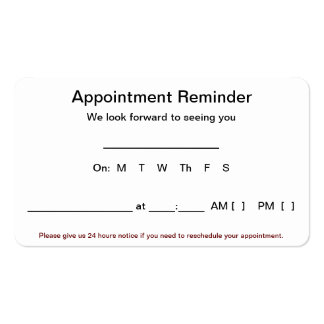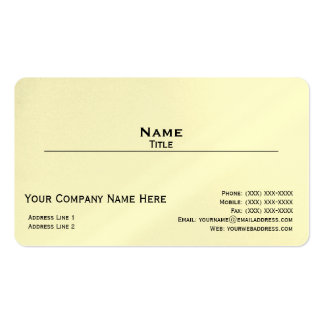There are some marketers out there that are just plain tired of hearing about storytelling.
Does storytelling really convert into real sales when it comes down to it? It’s a legitimate question.
One such person questioning the old fable arts for newfangled marketing is Stefan Sagmeister, an Austrian graphic designer living and working in NYC. Sagmeister was interviewed at the FITC Toronto conference in 2014 and, during that interview, he had some strong views to share about the glamour of storytelling and why it would be wise for many of us to reconsider our vocabulary:
You are not a storyteller – Stefan Sagmeister @ FITC from FITC on Vimeo.
In this video, Sagmeister gives an entirely different rhetoric than most of us are used to hearing. By telling us that the majority of people who call themselves storytellers are not actually storytellers, Sagmeister sort of turns the institution on its head entirely and begs us to ask of ourselves, “What are we, then?”
While Sagmeister’s statements may seem dark, we would argue that they’re not, and here’s why: when you free yourself from thinking of yourself as strictly a storyteller, you make room to bring out the best in storytelling. Make sense?
Is Everyone a Storyteller? Here’s Your First Step to That Answer: Know Yours
While it’s absolutely undeniable that bloggers, marketers and SEOs all employ elements of story in their lines of work, that doesn’t always go hand-in-hand with being a storyteller. Storytelling, in many ways, is a fallacy whereas the fields we just mentioned are logic, analytics and research. Therefore, while it’s unwise for SEOs, marketers and bloggers to pigeonhole themselves by stating that they are only storytellers, it makes perfect sense to seek, within your writing, to bring out everything that the elements of storytelling have to offer.
With that in mind, the first step to using storytelling to its full potential is to become intimately familiar with your story.
Why Brand Backstory Matters: The Coca-Cola Legacy
Storytelling and backstory are two different animals. Storytelling is a conversation between clients and companies – a sort of “here’s why you should still be interested in buying this product.” Brand backstory, on the other hand, is the foundation from which everything else springs. Because of this, it’s actually impossible to engage in good storytelling without first being familiar with your brand backstory. For example, think about the iconic 1971 Coca-Cola ad titled “I’d Like to Buy the World a Coke”:
Obviously, this ad is an all-star example of storytelling. In 1971, there were dozens of sugary drinks on the market, and yet Coke managed to set its drink apart by creating a progressive, positive, catchy, upbeat ad that made the drink into something distinctly sexier and more holistic than a simple soda. The ad made the drink a symbol of authenticity, cohesion and hipness. Although the ad was, at the time, the most expensive ad in history (topping out at $25,000) it is now regarded as one of the most influential ads ever.
Despite the success of the ad, it’s impossible to imagine the ad having ever taken place if Coke wasn’t so dang good at knowing its own backstory. Before we delve into this, let’s pause to think about the fact that Coke is one of the most recognizable brands in the world right now, but there’s no way it could have achieved that if it didn’t know what its backstory was from the get-go.
Although the Coca-Cola company has existed since 1886, the Coke soft drink only made its debut in 1944. From its inception, the drink sprung from the roots of being more than just a soft drink. Instead, it was a way for people to come together and spend quality time. As such, the slogan “Let’s Have a Coke” became the platform that would propel the brand to advertising dominance and, eventually, would lead to the world’s most successful commercial.
Because Coke knew itself well enough to use its backstory to create a convincing marketing story, it won at storytelling in the way that only brands who know where they’ve come from can.
3 Key Tips For Telling Your Story Effectively
With Coke as an example, it’s clear that, to succeed and to make your storytelling more than just a marketing tactic, it’s imperative to make yourself stand out from the crowd. “How,” you ask?
1. Know your mission
What is your mission, as a brand or as an individual? Although money is a common driving factor, it’s a thin veil that customers are going to see through in an instant. Aside from money, companies are driven by all sorts of things – a desire to change the world, to solve a problem, to create an innovative new product that simplifies life and makes daily tasks more enjoyable, etc. Think about Dollar Shave Club, which revolutionized the razor industry and became worth upward of $615 million thanks to its snarky attitude and exciting structure (Hint: their current campaign is “our blades are f*cking great!) The company began in 2012 after CEO Michael Dubin ran out of razors, went to the drug store to get them and had a terrible experience which ranged from the traffic he had to sit in to get there to the overpriced, awful razors he purchased once he arrived. From that experience, the idea for Dollar Shave Club was born. Since then, the brand has been on a self-proclaimed mission to “change the way men address their shaving and grooming needs.” How’s that for defining your mission and rocking it with everything you have?
2. Use your “failures” as fodder
Unless you’re some kind of marketing unicorn, we’re willing to bet that your brand backstory is rich with failure, confusion, and hilarious (or not) setbacks. In order to master storytelling for your brand, it’s important to bring those things to the forefront of your story and to do so unapologetically. This is especially true for small, brick-and-mortar B2C companies who interact closely with their clients because, let’s face it, there are hundreds of brands out there doing pretty much exactly what you’re doing. Without great storytelling elements in your marketing, what is going to set you apart?
Think for a moment about lifestyle guru Tim Ferriss, who is arguably one of the best modern examples of self-branding we have. In a 2011 blog post, Ferriss exposes his own failures, concluding that “most miraculous successes are nothing of the sort.” If you’re going to put yourself out there, you’re going to fail. That much is a given. What most people don’t know, however, is that exposing the “failures” that helped you get to where you are now is one of the most effective ways to make yourself relatable, hilarious, tender and in-demand. To do this effectively, think about what your original inspiration was, which job(s) led you to where you are now (were you a dishwasher, for example? Or a fry cook?) Think about what your first office looked like (sawhorses and plywood for desks, anyone?) and who your first customer(s) were. People want to hear what you have to say, who you are and where you came from, so don’t be afraid to embrace your process and put it out there for everyone to enjoy.
3. Stay consistent
Building your brand’s backstory is a little bit like growing into a fully functional adult human being. Throughout our teens and 20s, most of us try many different personalities, interests and passions on for size. We may get into grunge, decide we’re vegetarians or freak our parents out by going into the Liberal Arts, but eventually we stabilize and we start to figure out who we really are. This, in turn, helps us clear out the rubbish and determine what it is we’re actually interested in and how we want to spend our time.
Brands go through this same process. In the early stages of a company, a brand may involve itself in everything, display seemingly random ad messages or just seem generally disjointed and disorganized. Over time, however, the brand starts settling in to its authentic self. Once you find your authentic brand story, stick with it by extending your company into parallel volunteer work, political, social or economic causes or company mergers. You’re much more likely to be recognizable by your customers if you remain consistent across the board.
The 101 On Owning Your Story
If Sagmeister is right and we aren’t really the storytellers that we think we are, the only option left to us is to own the stories we do have and learn how to bring them out gracefully, compellingly and interestingly for our customers.








No comments:
Post a Comment